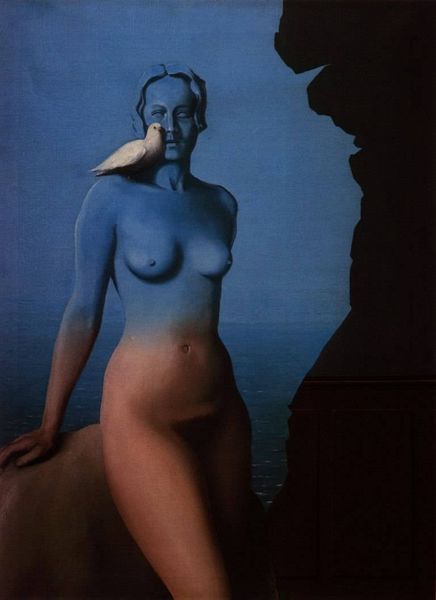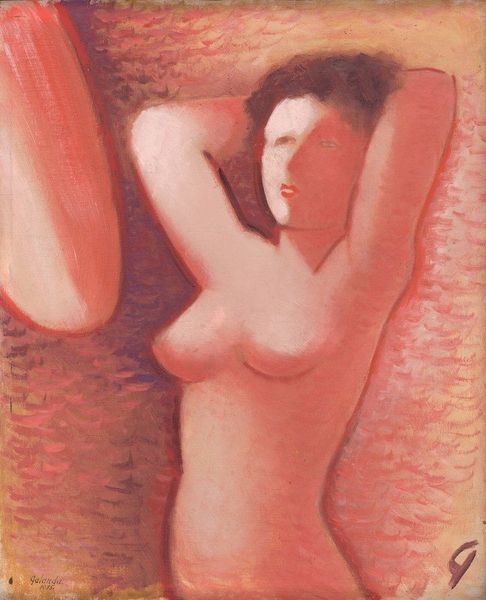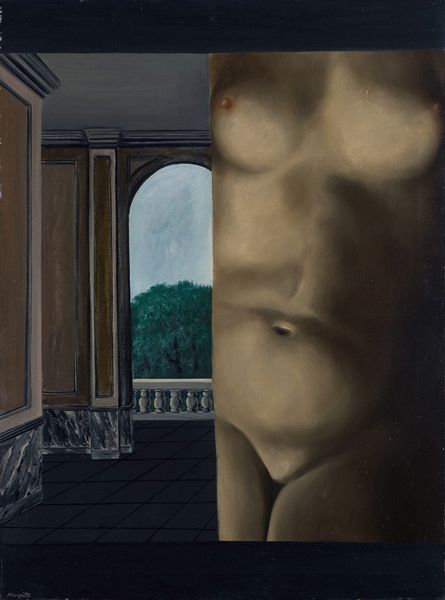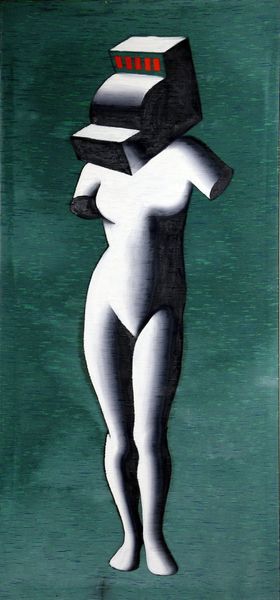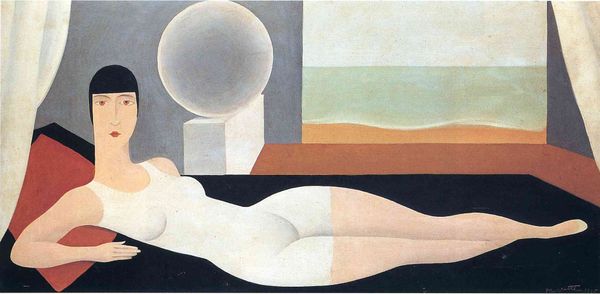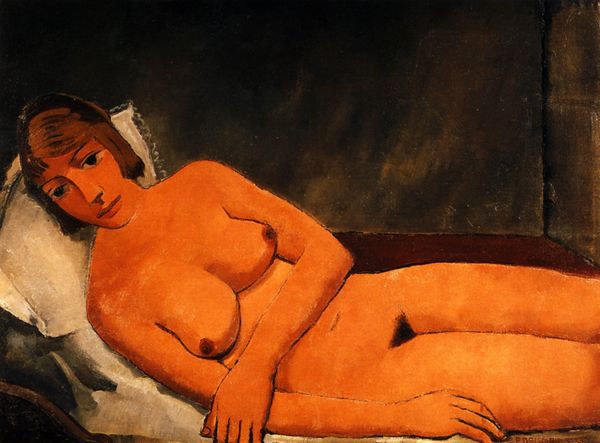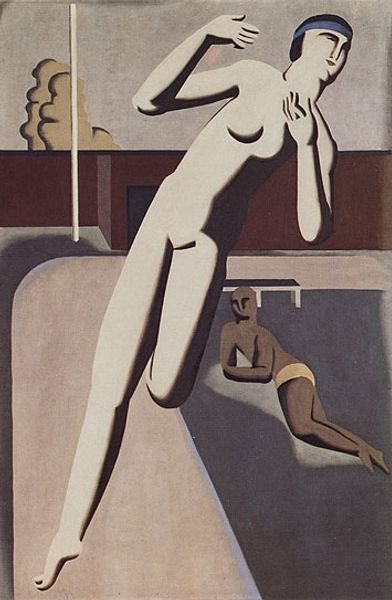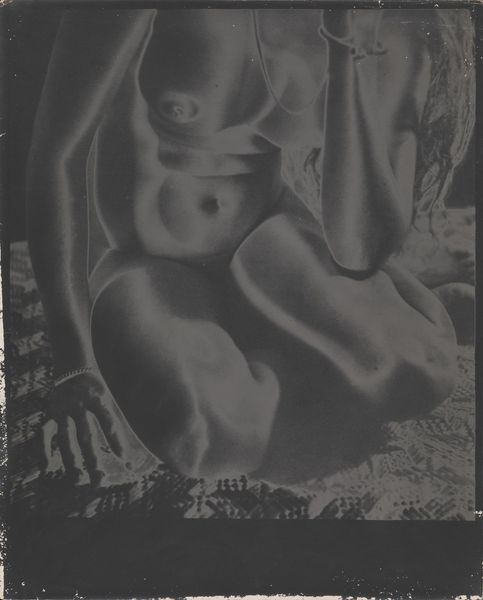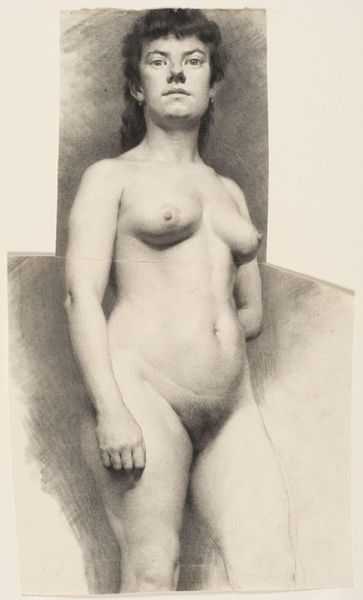
painting, oil-paint
#
painting
#
oil-paint
#
sculpture
#
figuration
#
framed image
#
academic-art
#
surrealist
#
surrealism
Dimensions: 60 x 73 cm
Copyright: Rene Magritte,Fair Use
Curator: René Magritte painted "The Light of Coincidence" in 1933. It resides here at the Dallas Museum of Art, an oil on canvas showcasing a stark, unsettling juxtaposition. Editor: It’s undeniably eerie. That sculpted torso trapped in what looks like a box, lit so dramatically... it feels theatrical, almost staged. Curator: Precisely. The painting plays with light and shadow to amplify its paradoxical nature. Note how the candle's illumination fails to fully dispel the darkness engulfing the female form. The framing device itself underscores the artificiality of the scene. Editor: It looks like cheap plaster—the way it's been cast, how the form has been broken around the neckline. I'm thinking about studios filled with copies, quickly rendered torsos used for practice. The light doesn't give it some sense of mystery, it's like… revealing its fakery, the industrial reproduction. Curator: An interesting counterpoint. It speaks, perhaps, to a deconstruction of classical beauty, challenging our perceptions of the idealized female form, what are we to make of something that appears classical and academic that isn’t? Semiotically, the disjunction between the supposed purity of classical art and its presentation here creates visual tension. Editor: Agreed. Considering the broader context, I wonder if this ties into Magritte’s perspective on consumer culture and fetishization. The statue becomes a manufactured object, consumed through this artifice and display that evokes window dressing—which makes the light cast such that it reflects the constructed presentation of femininity itself, artificial and posed. Curator: Indeed, the artificiality highlights deeper commentaries embedded within the symbolism. Editor: To me, the candelabra and the dark setting really make this whole space seem posed, stagey and yet mundane at the same time. Curator: The light in this painting is undeniably rich in interpretive possibilities, both as formal composition and also material and artistic process. Editor: Exactly! It pulls the whole production—casting, creating the sculpture, buying, staging, then painting—into our viewing of this single moment.
Comments
No comments
Be the first to comment and join the conversation on the ultimate creative platform.

